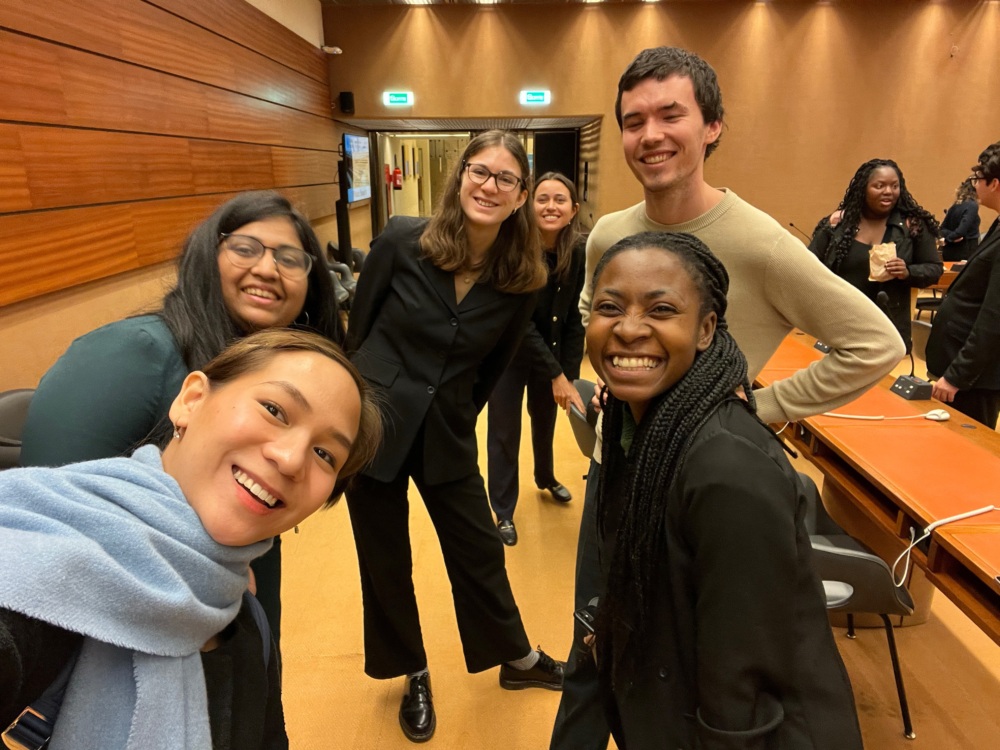
Apply for the 2024 NTI | bio Next Generation Biosecurity Delegation
NTI | bio will bring a 2024 Next Generation Biosecurity Delegation of early-career professionals to the Biological Weapons Convention (BWC) meetings from August 19 – 23.
New Tool Launched in Fight Against Infectious Disease Outbreaks; Expanded Global System Will Help Detect Potential Public Health Threats
The global “early warning system” responsible for gathering and disseminating preliminary reports of public health threats around the world has been enhanced to provide early warning information in all UN languages, allowing additional information to be screened, shared and acted upon quickly.
The expansion of this “early warning” surveillance tool allows the system to provide vital information in Arabic, English, French, Russian, Simplified Chinese, and Spanish, plus Traditional Chinese. The original GPHIN program screened news reports and provided information only in English.
The Global Public Health Intelligence Network II (GPHIN II) was launched today at a news conference sponsored by the Public Health Agency of Canada, the World Health Organization (WHO) and the Nuclear Threat Initiative (NTI). The original version of GPHIN has been in use since 1998 and currently identifies—in real time—the first hints of nearly 40% of the outbreaks subsequently verified by WHO.
Because local news media stories often provide the first indication of a public health threat, GPHIN II monitors global media sources (such as news wires and websites) and global health and science websites (such as ProMED) for early word of events such as disease outbreaks, contaminated food and water, bioterrorism and exposure to chemical and radio-nuclear agents, and natural disasters. It also monitors issues related to the safety of products, drugs and medical devices.
“Accurate and timely information on global public health issues is key to being able to quickly assess and respond to emerging health risks around the world,” said Dr. David Butler-Jones, the Chief Public Health Officer for Canada.
“The biological threat is fundamentally different from other security threats,” said former Senator Sam Nunn, co-chairman of NTI. “In the event of a biological attack, it’s our doctors and nurses who will protect us, not our military. Detecting an outbreak early can mean the difference between containment and a massive outbreak.”
“Global cooperation is the way to peace and prosperity, and GPHIN is a great example,” said Ted Turner, co-chairman of NTI. “The more information, the more languages, the more countries, the more people that participate – the healthier and safer everyone is.”
The information is filtered for relevancy by an automated process, then analyzed by Public Health Agency of Canada GPHIN officials. Notifications about public health events that may have serious health consequences are immediately forwarded to users. Subscribers to GPHIN include government agencies that provide public health surveillance and non-government organizations involved in public health issues. Users will now be able to review the documents in the language of their choice.
“With early warnings of such significant events as disease outbreaks, public health and other government authorities worldwide are better able to undertake the measures necessary to protect the health and safety of their populations, ” said the WHO’s Guenael Rodier, director of the Communicable Diseases Surveillance and Response Program. “GPHIN has been an invaluable tool with immeasurable benefits for the global public health community and we look forward to utilizing the enhanced system.”
In the last decades of the 20th century, new diseases began emerging at the unprecedented rate of one per year. This trend is expected to continue. On average, WHO now investigates 200 outbreaks every year. Of these, around 50 will require an international response.
GPHIN has helped WHO identify and respond effectively to numerous events including outbreaks of typhoid fever in Kenya (February 2001), legionellosis in Spain (July 2001) and cholera in Zanzibar (February 2002).
GPHIN was also one of the principle partners to WHO that contributed to the global response to SARS. Throughout the outbreak, GPHIN provided raw intelligence that helped WHO maintain up-to-date and high-quality information on indications that the disease might be spreading to new areas outside of China. GPHIN II, with its enhanced language capacity, might have identified the initial outbreak even sooner by translating Chinese language media sources.
GPHIN was developed by the Public Health Agency of Canada. GPHIN II was developed with financial assistance from NTI’s Global Health and Security Initiative, an organization co-chaired by philanthropist Ted Turner and former U.S. Senator Sam Nunn. The Nuclear Threat Initiative (NTI) is a public charity whose mission is to strengthen global security by reducing the risk of use and preventing the spread of nuclear, biological and chemical weapons. NTI’s Global Health and Security Initiative supports the development of global public health detection and response capabilities under the premise that the best response to a biological threat, intentional or an act of nature, is a robust global public health system. The enhancements to the GPHIN I prototype were developed through a Collaborative Research Agreement with Canada’s Nstein Technologies.
###
Sign up for our newsletter to get the latest on nuclear and biological threats.
NTI | bio will bring a 2024 Next Generation Biosecurity Delegation of early-career professionals to the Biological Weapons Convention (BWC) meetings from August 19 – 23.
NTI | bio convened more than 25 high-level biosecurity professionals, AI experts, and policymakers for the inaugural meeting of the International AI-Bio Forum.
The China Arms Control and Disarmament Association and NTI jointly convened a virtual Track II Dialogue, a forum to promote mutual understanding among Chinese and U.S. experts about urgent and emerging biosafety and biosecurity risks.

